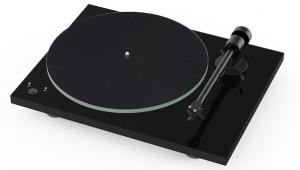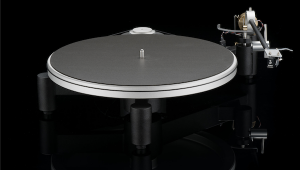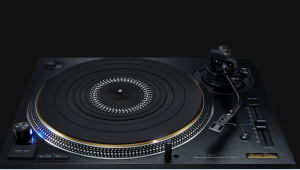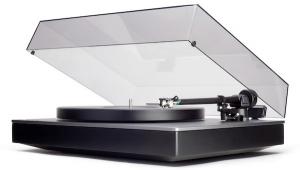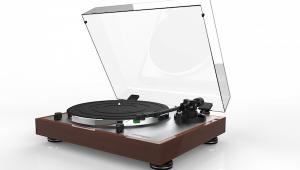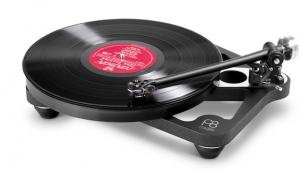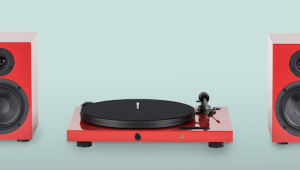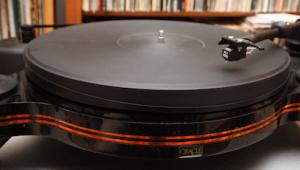Technics SL-1200GR2 Direct Drive Turntable
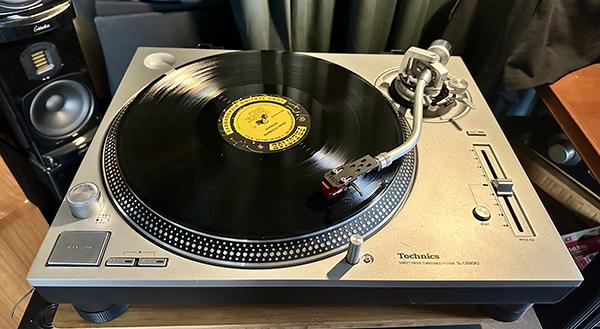
Introduced in 1979, the Technics’ SL-1200MK2 turntable soon became both the company’s standard bearer and the DJ’s vinyl spinner of choice. With its popularity, the 1200 went through endless iterations, entering the home, studio, and professional markets while maintaining absolute dominion over the DJ realm. In its latter variations, the 1200 also became a turntable audiophiles could love.
Recent Technics SL-1200 variants marketed to audiophiles have included the SL-1200GAE (SRP: $3,999), the Grand Class SL-1200G ($4,000), and the SL-1200GR ($1,699). Technics’ latest audiophile turntable offering is the Grand Class SL-1200GR2 direct drive turntable, yours for the reasonable (at least in audiophile terms) SRP of $2,199. Note that the SL-1200GR2 has a silver finish, and that’s the model being tested in this review. The comparable SL-1210GR2 ’table has a black finish, and the same SRP. (You can read more about all that here.)
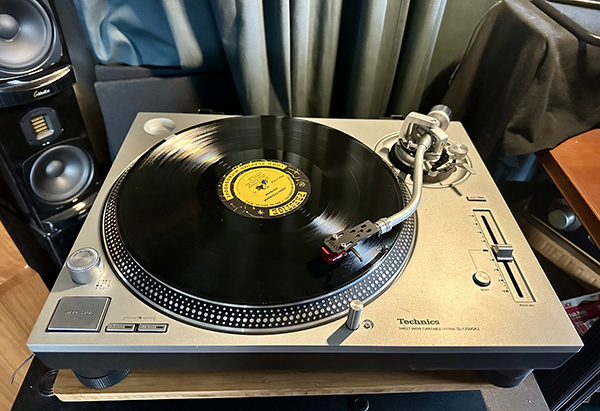
Features & Specs
Like all descendants of the Technics SL-1200, the feature set offered with the GR2 series has remained consistent: a direct-drive motor, 9in static S-shaped gimbal tonearm, stroboscope, target (stylus) light, diecast aluminum platter, four insulator feet, and slider pitch control.
Advances with the new GR2 series include, according to the official press release, “a revolutionary new drive control method for smooth, accurate rotational stability, and a new power supply for an exceptionally low noise floor.”
The GR2’s motor control signal is produced by engagement of a PWM signal generated by ΔΣ (Delta Sigma) Modulation, a process of 1-bit D/A conversion used in Technics’ digital amplifiers that use their proprietary JENO Engine technology. As the one who reviewed the Technics SU-R1000 digital integrated amp for our sister site Stereophile, I can unreservedly state the technology works. That amp had vanishing levels of noise, part of what made it one of the finest integrateds I’ve ever heard.
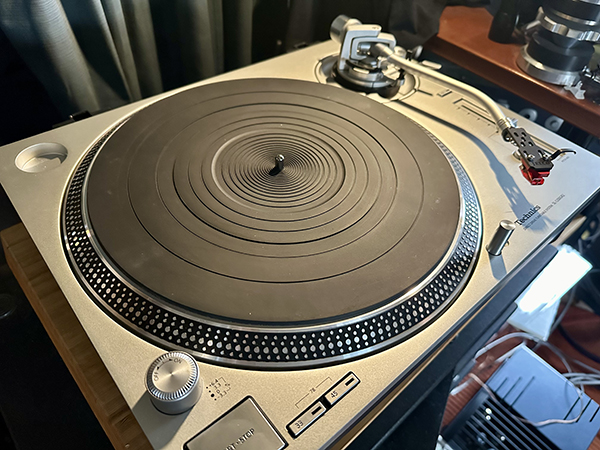
Technics claims this new Delta Sigma Modulation method of signal generation makes a major difference on the frequency range where motor vibrations intersect with the resonance of the tonearm/pickup cartridge combination. Tracking precision should be radically improved/corrected, according to Technics.
Built in Malaysia, the GR2’s new multi-stage silent power supply combines, as stated on the Technics site, a “low-noise, high-speed power supply working at over 100kHz, and a noise-canceling circuit inherited from our reference class turntable SL-1000R, cancelling remaining noise by injecting the reversed-phase current of the actual noise. By this method, a very low noise floor is achieved, enabling exceptional signal-to-noise ratio, improving the overall signal performance.”
While new technologies have been added, old Technics tricks die hard. The GR2 includes the silver or black two-layer plinth made of aluminum diecast and BMC (Bulk Molding Compound); the standard S-shaped aluminum tonearm; a platter made of aluminum and damped with rubber on its underside, and the large insulator feet.
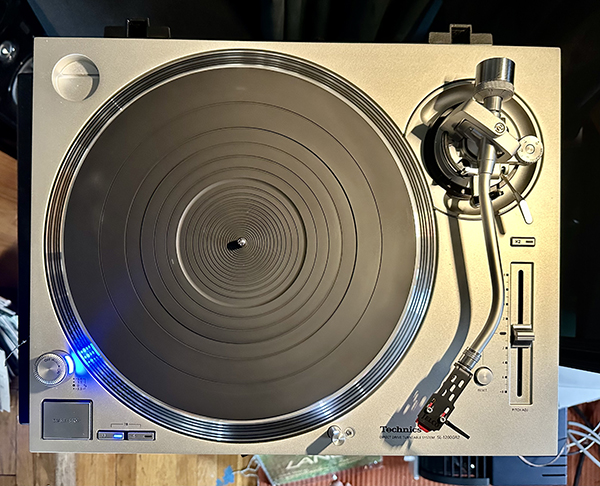
Though the GR2 essentially looks like every other Technics turntable, specs are malleable. The GR2 stands 17 27/32 x 6 13/16 x 14 21/32in (w/h/d), and weighs 25.35lb. The GR2 uses a two-layer plinth for vibration damping, and an iron-coreless, brushless AC motor which runs at 33 1/3, 45, and 78rpm for playback. Its stainless-steel spindle rides on a plastic plate. And, of course, there’s the detachable bayonet headshell, which makes switching cartridges child’s play.
The GR2’s two-layer aluminum diecast platter sports new vibration-controlling ribs and weighs 5.51lb (including rubber mat). There’s a single pair of RCA jacks ’round back, and I wasn’t about to use the flimsy ICs included with the ’table. Doubly odd, the power cord was thicker and more robust than some I’ve received with amplifiers.
In the box — which features Technics’ new, all-cardboard packaging and inserts to avoid use of polystyrene — came the rubber mat, dust cover (which I didn’t use), chunky metal EP record adapter, counterweight, auxiliary counterweight that screwed neatly into the aft of the tonearm when needed, headshell, overhang gauge, screw set for cartridge, cartridge spacer, phono cable (pair), phono earth (ground) lead, AC power supply cord, and the owner’s manual.

The familiar S-shaped tonearm is of the universal static balance type, effective length of 230mm (9 1/16in); overhang of 15mm (19/32in); offset angle of 22°, VTF adjustment range as 0-6g, and headshell weight as approximately 7.6g.
“Gimbal bearings are micro steel ball bearings,” noted Technics Business Development Manager/US Bill Voss, via email. “Two bearings for vertical, and another two for horizontal. They are not sealed bearings as is commonly referred to since the pointed shaft end directly contacts the balls.”
Cartridge weight range without auxiliary weight clocks in at 5.6-12.0g, while with auxiliary weight, it’s 10.0-16.4g. In the past, some have complained the SL-1200 series’ VTA dial, conveniently positioned around the base of the tonearm assembly, lacked enough range to work with all carts. Technics solves this problem, in theory, by providing a 3mm aluminum diecast cart spacer for use with the headshell, should the initial VTA not hit the exact target.
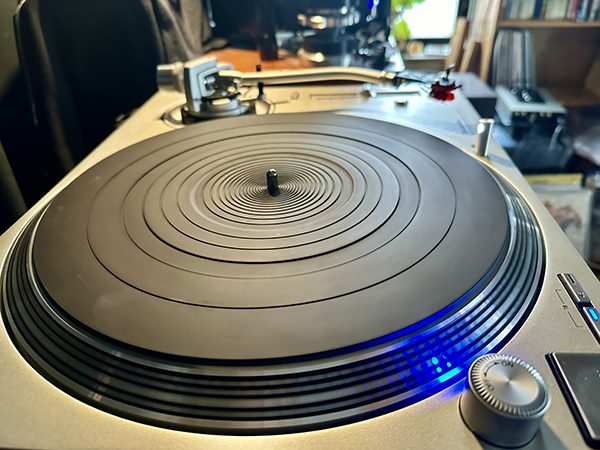
Setup
My system setup for this review included a Thorens TD-124 turntable/The Wand tonearm/Luxman LMC-5 MC cartridge combo. Carts used with the Technics GR2 ’table included the EMT TSD 15N MC, Kuzma CAR-30 MC, and Dynavector DV-10X5 MKII MC. Amps used were the PrimaLuna EVO 400 (70Wpc at 8 ohms, ultralinear; 38Wpc into 8 ohms, triode) and the Triode Lab 45 EVO (4Wpc), both integrated models. A PrimaLuna EVO 400 phono preamp (which consistently knocks me out for its purity) provided gain. DeVore Fidelity Orangutan O/baby, Heretic AD614, and Volti Audio Razz loudspeakers worked the room. Cabling included Analysis Plus Silver Apex RCA ICs (turntable[s] to phono stage), Triode Wire Lab Spirit II RCA ICs (phono stage to amp). Speaker cables were AudioQuest Robin Hood ZERO. Finally, the AC cords that carried juice were AudioQuest NRG Z, and Triode Wire Labs The Obsession NCF.

I began with the Dynavector cart, aligned to the tonearm using my Feickert Universal Protractor. I slid the aluminum counterweight over the aft stub of the tonearm. Tracking force was set using my Riverstone Audio Precision Record-Level VTF Gauge.
The GR2’s four leveling feet are a sticky proposition. They were hard to move and adjust, and harder to use in making the table level. I screwed them all the way down and relied on shims to achieve proper balance.
As with my amps, I site turntables on IKEA Aptitlig bamboo boards, an industry secret no more! These boards typically make the sound airier without adding to or deadening or hyping the music in any way.

Listening Sessions
I began spinning vinyl on my Thorens/Wand/Luxman combo to set a reference point. I used vinyl from Acoustic Sounds’ Prestige series, including their updated editions of Gene Ammons’ 1960 classic Boss Tenor (APRJ 7180), 1958’s Relaxin’ With the Miles Davis Quintet (APRJ 7129), John Coltrane’s debut as a leader, 1957’s Coltrane (APRJ 7105), and Trane’s 1961 effort, Lush Life (APRJ 7188).
I also compared these reissues to my original pressings. In my experience, new reissues are smoother sounding overall, have deeper low-end, often a wider soundstage, and may be quieter than original or early pressings — but they often lack the life force, dynamics, and natural presentation and flow of early pressings, which may be due to the early pressing being closer to the original tape/source. But it’s still interesting to compare reissues to OGs. I’ve heard Blue Note Tone Poet reissues that have overachieved compared to early or OG pressings, for example — but that’s the exception, not the rule.

At any rate, I was curious to see if the Technics GR2 would make the differences more or less apparent as compared to my much more expensive Thorens/Wand/Luxman combo baseline. Being especially careful to use the same cables from the ’table to the phono preamp and from phono to amplifier produced interesting, confirmable results. Contrasts were strong, and the differences were apparent.
Generally speaking, the Technics/Dynavector combo didn’t fully match the Thorens/Wand/Luxman trio for the latter’s intricacy of images, complexity/layering of soundstage, and inner finesse, its assemblage presented increased resolution and was a slightly quicker step off the mark. That said, let’s drill down and look at the comparative value. The Technics GR2, as noted at the outset, sells for $2,199, and you can add $800 to the tally for that low-output Dynavector cart. The going rate for a working Thorens TD-124 is around $2K, the 9.5in Wand tonearm goes for $1,950, and the Luxman LMC-5 cart sells for $2,695, so that combo is admittedly 3-4x more than the Technics/Dynavector review combo.
I expected the pricier Thorens rig to deliver stellar resolution, better imaging, serious jump, and attack, but the Technics admirably more than held its own, all things considered. In fact, there were times when the Technics ’table seemed quieter overall than the traditionally noisy Thorens, but that was also recording dependent. The GR2’s darker sound worked well with jazz, and its larger images and richness allied to its lush atmosphere, making music listening satisfying and pleasing. And let’s not forget the Technics’ ability to switch carts in literal seconds, thanks to the removeable headshell.
Sticking with spinning the Analogue Productions reissues on the GR2, Gene Ammons’ “Hittin’ the Jug” (Boss Tenor Side A, Track 1) provided strong left and right images with a weaker center fill than my OG. The sound was big, lush, and as rich as a tumbler of bourbon and a Havana smoke on the GR2. The MDQ’s “Oleo” (Relaxin’ Side B, Track 1) provided Trane in spades, his tenor sax solo a big thing of wonder and beauty, if a little more strident than my OG Relaxin’ LP.

The Technics GR2’s easy pacing and large imaging made for a swinging soiree of the first order. Trane’s “Straight Street” (Coltrane Side B, Track 1) was tubbier than on the Thorens, the acoustic bass bigger and softer, and seriously weighty overall. Though the stage was not as intricately detailed as with the Thorens, the sound was dynamic and full.
Though I used the Dynavector cartridge for the bulk of this review, upon changing to the EMT or Kuzma carts, the GR2 dramatically upped its game, providing greater resolution, speed, textural information, and spaciousness without losing atmospherics or richness. In fact, the Technics ’table was very sensitive to cartridge changes and every piece of ancillary gear used in this review.
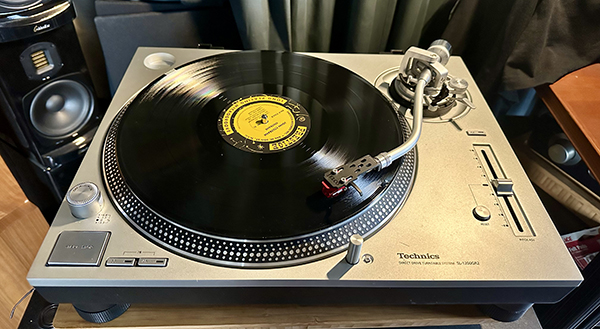
Conclusions
The Michell TechnoDec Reference turntable that I reviewed here this past September (SRP: $2,698) may have played faster and jumped quicker than the Technics GR2, but it didn’t provide similar lushness, sense of romance, or atmosphere. The Pro-Ject Classic EVO ’table ($2,299), which is a dead ringer visually for a Thorens TD-160, may be closer in sound to the Technics, while the Rega Planar 6 ($1,875) will certainly give the Technics a run for superior pace, rhythm, and timing (a.k.a. PRaT) in a belt-drive machine.
Yes, there are indeed many options to be had in this price range — and, frankly, many of them are darn good! — but the Technics SL-1200GR2 direct drive turntable is a great choice and is well worth some serious, serious consideration.
For more about Technics, go here.
To find an authorized Technics retailer, go here.




